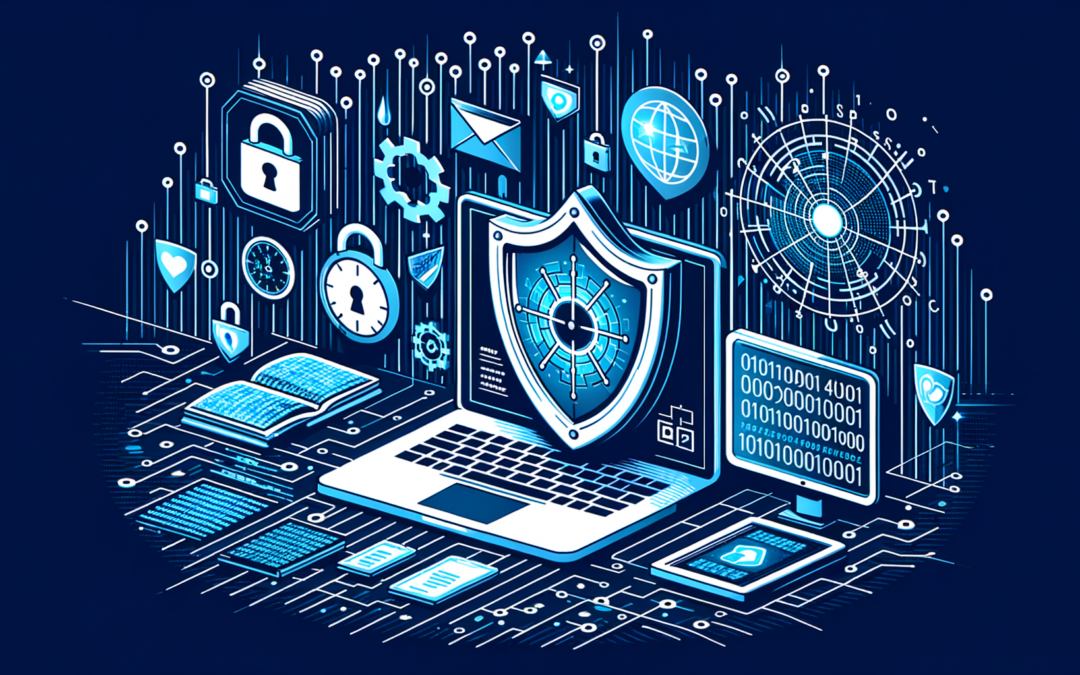Table Of Content
5 Essential Cybersecurity Techniques
In today’s rapidly evolving digital landscape, cybersecurity has become a critical concern for businesses and individuals alike. As we start into 2025, the need for robust and effective cybersecurity measures is paramount. In this comprehensive blog post, we delve into five practical techniques that promise enhanced security for your digital assets. Whether you’re a cybersecurity professional or a business owner, these insights will help you strengthen your defenses against the ever-growing threat of cyberattacks.
Understanding the Need for Enhanced Cybersecurity Regulations
The prevalence of cyber threats and attacks has highlighted the urgent need for enhanced cybersecurity regulations. With sensitive data breaches becoming increasingly common, it is imperative to establish stringent regulations that mandate the protection of personal and corporate information. The article emphasizes the role of governments and regulatory bodies in creating frameworks that ensure organizations are held accountable for cybersecurity lapses. These regulations are designed to foster a culture of security awareness and dictate the minimum security standards that must be met.
One key aspect of these regulations is the emphasis on regular audits and compliance checks. Organizations are encouraged to conduct periodic security audits to identify vulnerabilities and rectify them swiftly. By adhering to regulatory policies, businesses can demonstrate their commitment to safeguarding data, thus gaining the trust of customers and partners. Moreover, compliance with these regulations can prevent hefty fines associated with data breaches, creating a financial incentive for companies to prioritize cybersecurity.
Importantly, cybersecurity regulations need to be dynamic, adapting to the evolving threat landscape. As tactics employed by cybercriminals become more sophisticated, the regulatory frameworks must also evolve to address new challenges. This continuous improvement helps ensure organizations remain resilient against emerging threats. Industry leaders, cybersecurity experts, and policymakers must collaborate to create responsive regulations that can effectively protect data and maintain the integrity of critical systems.
Addressing IoT Vulnerabilities: A Growing Concern
The Internet of Things (IoT) is revolutionizing the way devices communicate and operate, offering unparalleled convenience but also introducing a plethora of security vulnerabilities. The article addresses the pressing need to secure IoT devices, which, due to their interconnected nature, present attractive targets for cybercriminals. IoT devices often lack comprehensive security measures, making them susceptible to breaches and exploitation.
To counteract these vulnerabilities, manufacturers must prioritize integrating robust security protocols during the design and development phases. By doing so, vulnerabilities can be addressed at the source, minimizing the risk of exploitation when these devices are deployed in various environments. Moreover, continuous security updates and patches must be provided to keep IoT devices safeguarded against newly discovered threats.
Alongside manufacturer responsibilities, users must also play an active role in securing their IoT devices. This involves changing default passwords, enabling two-factor authentication, and staying informed about security updates from device manufacturers. By adopting these proactive measures, individuals can significantly reduce the likelihood of their devices being compromised.
Addressing IoT vulnerabilities requires a comprehensive approach, involving collaboration between manufacturers, consumers, and regulatory bodies. By establishing industry standards and guidelines, we can create a safer landscape for the proliferation of IoT technologies. This proactive approach not only facilitates secure communications but also enhances user trust and enables the unleashing of IoT’s full potential.
Data Protection: Safeguarding the Crown Jewels
Data is often referred to as the crown jewel of any organization, and protecting it is paramount. In today’s digital age, when data breaches can have catastrophic consequences, effective data protection techniques are crucial. The article highlights strategies that organizations can employ to safeguard their data assets against unauthorized access and exfiltration.
Encryption emerges as a powerful tool in protecting sensitive data. By encrypting data both at rest and in transit, organizations can ensure that even if data is intercepted, it remains inaccessible to unauthorized parties without the necessary decryption keys. Incorporating encryption into their data protection strategies not only secures sensitive information but also boosts regulatory compliance efforts.
Implementing robust access control mechanisms forms another critical aspect of data protection. Organizations need to establish stringent access policies, ensuring that only authorized personnel have access to specific data sets. With role-based access control, data can be compartmentalized based on user roles, minimizing the risk of data exposure to malicious actors within the organization.
Moreover, conducting regular data audits and risk assessments helps in identifying potential vulnerabilities and mitigating them before they can be exploited. Utilizing advanced threat detection technologies enables organizations to rapidly detect and respond to suspicious activities, minimizing the time to mitigate potential threats. By adopting a comprehensive data protection strategy, organizations can significantly enhance their cybersecurity posture and foster a culture of trust among stakeholders.
Incident Response: Preparing for the Unexpected
In the realm of cybersecurity, it is not a matter of if, but when an incident will occur. Hence, an effective incident response plan is essential for mitigating the impact of a cyberattack. The article outlines key components of a successful incident response strategy, stressing the importance of preparedness in rapidly recuperating from security breaches.
The first step in incident response is establishing a dedicated team of cybersecurity professionals who are well-versed in handling security incidents. This team is responsible for creating, testing, and updating incident response protocols based on the ever-changing threat landscape. Regular training sessions and simulations can ensure that team members are prepared to act swiftly and efficiently in the event of a breach.
An effective communication strategy is also vital during an incident. Timely and transparent communication with stakeholders, including customers, partners, and regulatory authorities, helps maintain trust and demonstrates a proactive approach to managing the situation. Organizations must ensure that their communication plans are clear, concise, and adaptable to various scenarios.
Successfully recovering from an incident also demands thorough post-incident analysis and forensics. By conducting a comprehensive review of the incident, organizations can identify root causes and implement measures to prevent similar incidents in the future. This feedback loop empowers organizations to continually improve their security measures and strengthen their overall cybersecurity resilience.
Global Cybersecurity Collaboration: A Unified Front
Tackling global cybersecurity challenges requires collaboration beyond domestic borders. The article advocates for increased international cooperation in combating cyber threats, as cyberattacks often transcend national boundaries. Through collective efforts, nations can share intelligence, resources, and best practices to better defend against emerging threats.
One avenue for fostering global collaboration is through multilateral agreements and treaties focused on cybersecurity. These agreements lay the foundation for joint efforts in research, policy-making, and operational coordination. By working together, countries can establish a unified front in combating cybercriminal activities and promoting a secure cyberspace for all.
Furthermore, fostering partnerships between private and public entities can elevate global cybersecurity capabilities. Public-private partnerships enable the exchange of expertise and resources, harnessing the strengths of both sectors to tackle complex cyber challenges. Such alliances can accelerate the development of innovative solutions and reinforce trust and resilience across borders.
International forums and conferences also play a crucial role in promoting cybersecurity collaboration. These platforms facilitate knowledge sharing, networking, and mutual support among cybersecurity professionals, policymakers, and researchers globally. By engaging in cross-border dialogues, stakeholders can address pressing issues, align on best practices, and collectively devise strategies to counter cyber threats.
Ultimately, global collaboration in cybersecurity is not just an option but a necessity. By leveraging international partnerships and cooperative strategies, we can create a robust framework for a safer digital future, safeguarding the interconnected world we call home.
Cybersecurity is an ever-evolving field, and it is crucial to stay ahead of the curve. At Jun Cyber, we offer comprehensive cybersecurity solutions to help protect your digital assets. Schedule a free consultation with our experts today and let us assist you in achieving robust security for your organization.
- For authoritative guidelines on enhancing cybersecurity, visit the Cybersecurity and Infrastructure Security Agency (CISA) for resources and recommendations.
- Explore the latest trends in IoT security and vulnerabilities by visiting the IoT Security Foundation.
- Learn about global cybersecurity standards and collaborations from the European Union Agency for Cybersecurity (ENISA).
Reference: 5 Practical Techniques for Effective Cybersecurity
Website: www.juncyber.com
Schedule a call with us: Schedule-A-Free-Consultation



